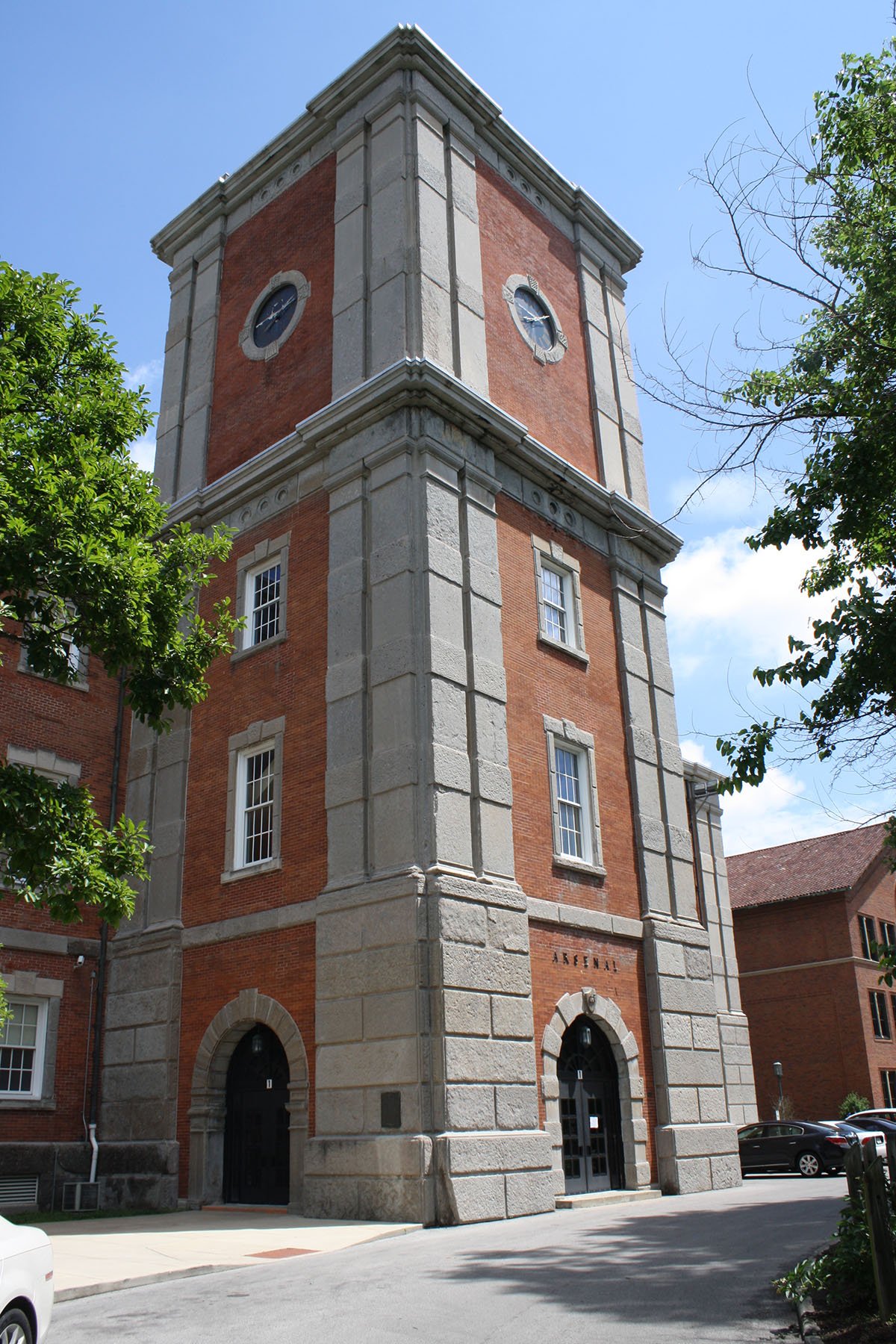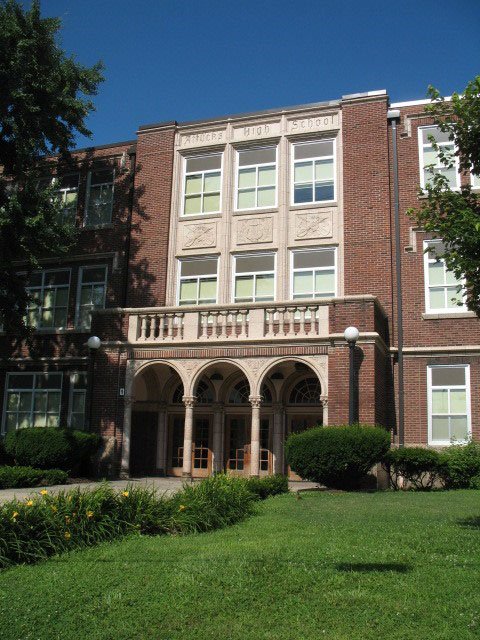4. Historic Schools Enrich Community Life
James Glass
Column that appeared in the Indianapolis Star onSome day in the summer or after 3:00 on a school day drive to 1500 East Michigan Street and pull into Arsenal Technical High School. A 120-year old wrought iron fence surrounds the spacious campus, which began life as an arsenal for the United States Army in 1863. The former arsenal itself, with an imposing central tower once used to store munitions, has been carefully preserved by the Indianapolis Public Schools (IPS), which acquired the property for use as a vocational and liberal arts high school in 1912. The school system used the buildings constructed by the Army—the Arsenal, gatehouse, west officers’ residence, enlisted men’s barracks, horse barn, and powder magazine for instructional purposes and constructed imposing classroom and vocational instruction buildings in the spaces between the military structures. The shade trees planted by the soldiers were retained. Pride in the school’s history was strong, as generations of students walked the halls of the Arsenal, took Spanish in the barracks, or ate lunch in the old officer’s residence. Tech became one of the largest high schools in the United States and a model for vocational education. Today, Tech continues as the largest high school in the public school system, offering today’s mix of vocational training and college preparation coursework. It serves as an anchor for the near eastside, situated between historic Woodruff Place on the east and the Cottage Home neighborhood on the west. Alumni are loyal to Tech, visiting the campus and holding regular reunions. The Class of 1951 announced plans in 2001 to restore the former gatehouse as a visitor’s center and museum for the school. Wilma Rugh Taylor, a coordinator of the project, stated that the “Tech campus has a rich history, and we want to preserve that history.”
Alumni of several former historic high schools of IPS have lobbied successfully over the past 15 years to persuade the school system to convert them to middle or junior high schools, rather than close and dispose of them. The former Crispus Attucks High School at 1140 North Dr. Martin Luther King, Jr. Street, has been a symbol of pride to generations of African Americans in Indianapolis. There students excelled academically and in high school sports despite the limitations forced on them by school segregation policies and widespread racial discrimination. Now Attucks is a junior high, renovated in the 1990s, and includes a Crispus Attucks Museum that showcases African American history in Indianapolis. In the Mapleton-Fall Creek neighborhood, alumni loyal to Shortridge High School persuaded IPS to convert it to a junior high. Shortridge had a long tradition of academic excellence; there the Echo was launched, the first daily high school newspaper in the United States. The alumni opposed plans to close the school, and it continues as a key visual landmark and center of community activities at 34th and Meridian. In Irvington, IPS has re-opened a former high school that it mothballed during the era of declining enrollments of the early 1990s. Thomas Carr Howe Junior High School at 4900 Julian Avenue, constructed in the Collegiate Gothic Style in 1939, has been operating in part of the building and IPS plans to add high school classes in the next several years as enrollment increases. On the Westside, likewise, alumni of the former George Washington High School have watched as IPS has re-opened their alma mater as a junior high. In all of these cases alumni have positive memories of teachers, learning, sports, and extracurricular activities. Sometimes grandparents, parents, and children have all attended the same school and share memories. And in all cases the schools serve as important social anchors for their neighborhoods. They are easily accessible for pupils and parents, their sports and social events build identity for culturally diverse neighborhoods, and community groups hold meetings in them. They are also sometimes custodians of the histories of their neighborhoods.
What of historic elementary schools? There the picture is not as positive. IPS over the past thirty years has steadily lost students. It has closed and sold or abandoned over half of the grade schools that were operating in 1972. Often these schools have been demolished or have sat vacant, while they deteriorate and blight their neighborhoods. Buildings where much community history occurred have become symbols of deterioration and lack of investment.
There are 21 historic elementary schools still operated by IPS, most with sufficient enrollments to continue as schools. Nearly all have suffered from decades of deferred maintenance. In some, inadequate ventilation, heating, or electrical systems make education unpleasant. Piecemeal remodelings have resulted in cramped quarters for staff or teachers. Sometimes, there are not cafeterias, gymnasiums, or state-of-the art computer technology. But as IPS has demonstrated in its high school conversions to junior highs, it’s possible to economically renovate historic schools into first class learning environments and return them to the positive environments for learning that they were for most of their history. And consider the “plus factors” of most historic grade schools: hardwood floors, quality wood cabinetry, high ceilings with plaster details or decorative pressed tin designs, murals by noted Indiana artists, spacious hallways, and the feeling that you are learning where hundreds of other people before you passed—maybe your parents or grandparents or maybe people different from you, but with similar goals in life.

Arsenal Building, Arsenal Technical High School. James Glass, 2017.

Crispus Attucks High School James Glass 2010
